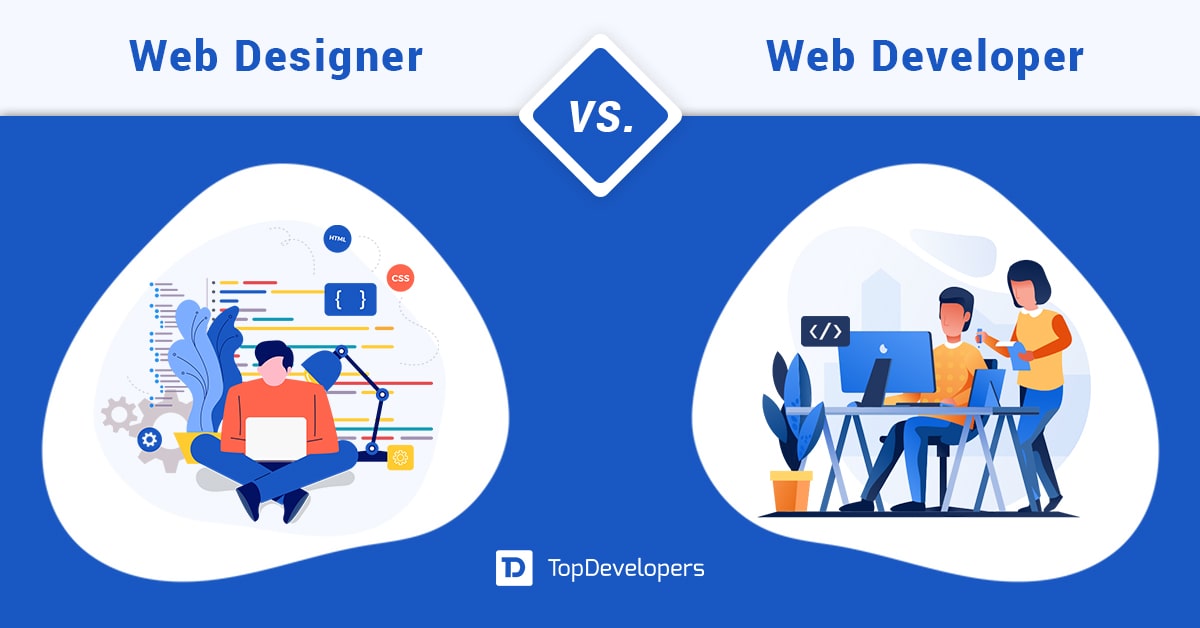
Undoubtedly, the online presence has become essential for every business regardless of its size and type to survive and thrive in the market. With technological progress and changing web design trends, users’ preferences for website browsing have evolved from desktop to mobile. Modern web design trends create a demand for making the website packed with the latest trends and technologies that perform well on every device screen. However, making the website design responsive is often ignored which results in a poor user experience and website abandonment.
- 57% of internet users say they won’t recommend a business with a poorly designed website on mobile.
- Nearly 8 in 10 customers would stop engaging with content that doesn’t display well on their device.
- According to Google, 61% of users are unlikely to return to a site on mobile if they have trouble accessing it, and 40% visit a competitor’s site instead.
- Alas! It’s not healthy for business growth and productivity. That’s why businesses have started emphasizing website redesigning or responsive website development that functions smoothly on all devices.
- 53.8% of web designers cite “not being responsive on all devices” as a top reason for a website to be redesigned.
The website redesign tips would help you know how to make your existing website mobile-responsive. Businesses planning to build a website should not overlook creating a mobile-first approach because responsive website development is a must-have feature/trend for any website. However, making pixel-perfect responsive designs for all screen sizes is quite a task.
Thankfully, responsive web design frameworks iron out the issue by facilitating responsive web design crafting in reduced time while ensuring high quality. Let’s discuss the responsive design framework in detail.
Table of Contents
- What is a Responsive Design Framework?
- Tips to select the right framework for responsive web design
- The Benefits of The Responsive Design Frameworks
- A Detailed Look at Leading Responsive Web Design Frameworks
- Takeaway
- FAQ
- What is a responsive website design framework?
- What are popular responsive design frameworks in 2024?
- How do responsive design frameworks benefit developers?
- Why is website responsiveness important?
- What is the difference between Responsive Web Design and Adaptive Web Design?
- Are responsive web design frameworks affordable?
What is a Responsive Design Framework?
With gazillions of mobile devices available in the market, the responsive web design framework provides a basic structure with features that are customized to suit device-specific design needs. With less complicated protocols, the framework is a complete package of standard codes in different programming languages that are required for website design.
It makes it easier for developers to use the code rather than write it from scratch, which reduces the time and effort required to design a website.
Tips to select the right framework for responsive web design
Comprehensiveness
The new designers should go ahead with simple-to-understand responsive website design frameworks as they are easy to work with. If you have hands-on experience with responsive website design frameworks, you can select comprehensive frameworks.
Installation time
The framework with the least installation time takes less time to configure. Thereby developers can start designing quickly.
Options they facilitate
Responsive web design frameworks come in various options for configuration, interface, and widget. You should look at them once.
Integration possibilities
Checking integration capabilities is all-important to ensure that the framework works and integrates well with existing systems and applications.
Customer support
The uninterrupted customer service helps in getting timely updates to the framework and issues resolution whenever they pop up unexpectedly.
The Benefits of The Responsive Design Frameworks
Make designing effortless
The tools and packages come in the framework for responsive web design eliminating the need to write the code snippets from scratch. The different templates pre-built in the framework facilitate customization that makes designing of website a breeze!
Strengthen security
Taking extra measures for web design security is no longer required as the security methods and features of built-in responsive design frameworks prevent fraudsters from database manipulation, SQL injection, and other vulnerabilities. Web designers can count on a reliable framework’s security.
Resolve CSS problems
When the designers of websites jump on the responsive website designing bandwagon, they face a lot of CSS problems that need to be addressed individually. The framework for responsive web design as a readymade solution keeps all the problems at bay.
Fasten mock-up development
Responsive web design frameworks provide a common basic structure that all websites have. It also reduces the code length for responsive web designing, which speeds up the website development process. Furthermore, the web designers can quickly build mock-ups of websites.
Handle browser compatibility
Website designing often gets into trouble with browser compatibility as it requires designers to make extra efforts. The responsive web design frameworks are designed in a way to handle browser compatibility fairly.
A Detailed Look at Leading Responsive Web Design Frameworks
TailWind CSS
Tailwind CSS is a powerful web design framework that facilitates building modern classes without leaving HTML. Utility classes help enable constraints that ensure consistency in color, size, typography, and shadows everywhere. The framework allows building the same component twice, which looks completely different from the previous component despite using the same colors, fonts, and size.
With Tailwind CSS, developers can enjoy the automatic elimination of unused CSS during website development, ensuring great performance. The ability to build responsive design in HTML removes the need to wrestle with complex media queries in CSS, further enhancing productivity.
Foundation
If you are looking for the most advanced framework in the world, the foundation framework helps businesses build a strong foundation with responsive website development that works everywhere. The framework ensures everything is semantic with the cleanest markup, which means it uses HTML tags that convey the meaning of the content, and without compromising speed.
The mobile-first website was developed for small devices, and gradually, they are scaled for larger devices. The build is customized with the modification of several design elements, including colors, sizes, fonts, and more. Also, the required training, consulting, and support services are offered, ensuring business growth with a responsive website.
ReactJS
The open-source JavaScript (JS) framework helps create a responsive website design that’s reusable, modular, and easy to update. The coding gets simplified, which ensures that a responsive style is applied to components without writing complex CSS rules. Virtual DOM, a concept where a virtual representation of the actual DOM is kept in memory and synced with the real DOM, and efficient rendering optimize the web design performance. The code splitting and lazy loading implementation diminishes page loading time.
The component-based architecture in ReactJS is a great fit for responsive web development. It allows the creation of components for different parts of the UI that are later composed of a responsive layout. This means that each part of the UI is a separate, reusable component, making it easier to create and maintain a responsive design.
Milligram
Millions of people use the minimalistic CSS framework to design fast and clean websites. It’s incredibly light, that’s just 2kb gzipped. However, it’s not just a UI framework; instead, it helps design websites for high performance and productivity with minimal overhead. The framework is easily integrated with other frameworks or libraries, ensuring website capabilities are extended effortlessly.
The framework provides the basic elements required to create website styles with excessive design choices. When your project with complex design requires a solid foundation without much styling, Milligram is the best fit.
Bootstrap
It’s an extensible and powerful framework that comes with a front-end toolkit to build responsive websites. The modular and custom architecture built using SaaS allows developers to import the components required, and write CSS with maps, functions, variables, and others. The responsive framework also facilitates building and extending variables for utilities, global themes, font styles, colors, and others in real-time.
Adding, modifying, and removing utility classes becomes effortless with utility API addition to the Bootstrap framework. The framework enables responsive utilities, custom naming conventions, and pseudo-class variants. What’s more? If you want to add popovers, modals, or tooltips, Bootstrap facilitates the same without using jQuery as its JS plugins make it possible.
Pure CSS
The open-source CSS framework is created leveraging numerous responsive CSS modules that are easy to use for any web design project. The fragmented nature of the framework makes it lightweight and the first option for web developers. Adherence to mobile-first standards and using Grids, Menus, and others enable building responsive websites that look great on all screen sizes.
Using minimal styles allows designers to write styles on top of them, making style overriding feasible. Also, Pure CSS facilitates adding new CSS rules instead of overwriting existing ones. This way, creating customized designs with unique looks and feel is possible.
Montage
The framework is famous for creating single-page applications that work well across all devices. Montage eases the management of code and components with a modular approach that further accelerates website development speed with its by-product components’ reusability.
With the depreciation of layout reflow, high performance is guaranteed for web pages to load on devices with limited hardware resources. Creating components with their own HTML template, CSS, and JS enables custom interface creation. Developers can use any template for responsive layout CSS regardless of their dependencies, which improves the development experience.
Material UI
Material UI is a fully loaded React component library with foundational components, advanced components, templates, and design kits, enabling rapid web design. Beautiful UIs are built by selecting existing templates or creating a new sophisticated theme.
The components are flexible and production-ready, with complete control in the hands of web designers for unlimited customization. The design kit comprises material UI components with typography, icons, colors, and more that are leveraged during responsive web development. Thereby, Material UI facilitates communication and boosts collaboration while working with the design team on responsive web design features.
Laravel
The PHP web framework based on Symphony follows an MVC architecture pattern that makes development plain sailing. Simple, elegant syntax enables creating functionality in reduced time and coding effort. Pairing Laravel with inertia, Livewire, React, or Vue allows for crafting an intuitive front-end of a website at speed.
Using inertia eliminates the need for building an API for handling routing and data transfer between front-end and back-end. Hitting the ground with inertia ensures high responsiveness and the best user experience delivery for even multi-page responsive website design.
JQuery
The feature-rich JS library has an API that works across all browsers ( Firefox, Chrome, and Safari) and devices. Thereby, websites running on different browsers will work seamlessly on all the devices. It makes HTML document traversal and manipulation, event handling, and animation a breeze. The JS library enables the designing of responsive sites with less code.
Leveraging CSS3 media queries and jQuery plugins created by community developers accelerates responsive design creation and implementation.
Materialize
The modern, responsive web design framework based on Google’s Material design facilitates creating responsive web design. Default stylings did all the necessary work to implement custom components, speeding up web designing.
The components and animation are incorporated everywhere using material design principles that ensure consistency across all platforms. Higher engagement results accompany the unified experience due to seamless integration with React. The designers looking to combine the timeless aesthetics of Material UI in interface development, then considering Materialize pays off.
Bulma
The CSS-only framework based on Flexbox requires no JavaScript for responsive web design, which makes it integrate nicely into any JS environment. The ready-to-use front-end components provided by Bulma are easily combined for engineering responsive web page interfaces. In addition to the mobile-first approach, the modular nature allows developers to import the tools or parts they need for website design.
With a simple grid system, the addition of columns is required that will resize automatically. Quick customization is enabled by setting Saas variables before Bulma import, which gives complete control over the web design process. The community of more than 2000 developers on GitHub and Patreon continuously supports the growth of modern frameworks.
Responsive grid system
The framework does a spectacular job of creating responsive website design easily and quickly. It provides limitless columns across a page and facilitates scalability to any width leveraging percentages. Putting content on the top priority enables developers to make the grid suit the content. The mobile versions of the grid come pre-built in the package which makes the initial stage easier.
It ensures seamless integration with existing HTML or CSS that makes responsive website creation hassle-free. Fluid columns allow developers to make the website mobile responsive with clean and concise design in reduced lines of code.
Skeleton
The lightweight framework helps in creating a responsive website with less than 400 lines of code while keeping mobile users in mind. With standard HTML elements and a grid, it provides all the utility of a larger framework and enables web developers to get started with small projects. 12-column fluid grids with a maximum of 960 pixels facilitate shrinking the grid as per the device size or browser type.
Simple syntax and responsive coding enable changing the grid in one line of CSS. The styles have made forms easier to create. Media queries are leveraged to serve scalable grids, list queries used for website styling across all devices, and mobile-first queries for organizing CSS.
Base
The responsive framework is built with a mobile-first approach and enables the building responsive website design that works well across all browsers. The modular code facilitates independent modules that allow developers to include what’s required. The workflow is automated using Parcel JS config.
With everything coming in a package, the developers don’t need to spend much time on overriding styles and can build elegant website designs with minimal code. The basic styles are set as a Base framework built on top of Normalize.css.
Semantic UI
The Semantic framework enables developers to make websites that speak the language of users with intuitive UI design. It allows responsive website design engineering with concise HTML where words and classes are used interchangeably. The framework uses simple phrases to trigger functionalities.
When the team finds performance is not up to par, Semantic helps in tracking performance bottlenecks without digging in depth into the code. With more than 3000 theming variables and over 50 UI components, web developers get the freedom to play with design and come up with unique designs. More than 5000 open-source projects built using Semantic UI help developers get the required assistance.
Takeaway
Responsive website design is a need of the hour that no business can afford to overlook at any cost. At the same time, it’s not an easy endeavor. That’s where a responsive web design framework turned out to be the best solution that meets the mobile-friendliness needs of business website projects. With the benefits and best responsive web design frameworks shared, you can use them to select the ideal framework that is a good fit for your project.
Also, when you partner with one of the top web design companies, they recommend the right frameworks that ensure quality and help you get the responsive website built in a reduced time.
FAQ
What is a responsive website design framework?
A responsive website design framework provides a toolkit that helps to build a website that works on all screen sizes and devices, ensuring an adaptive layout.
What are popular responsive design frameworks in 2024?
The popular responsive design frameworks in 2024 are Bootstrap, CSS, Tailwind, Bulma, and Materialize.
How do responsive design frameworks benefit developers?
Responsive design frameworks empower developers by providing everything from pre-built components to grid systems and others that streamline the development process, saving valuable time and effort.
Why is website responsiveness important?
Website responsiveness is crucial because it enables businesses to meet growing users’ needs for accessing websites on mobile, increase user base who use different devices, fulfill increasing technological requirements, and accommodate changes in future strategies.
What is the difference between Responsive Web Design and Adaptive Web Design?
Responsive web design is flexible and adapts the content for a wider range of devices. On the other hand, adaptive web design is optimized for specific device groups using multiple static layouts.
Are responsive web design frameworks affordable?
Responsive web design frameworks are not only effective but also affordable, with a range of affordable paid plans and free functionalities, making them a secure and cost-effective investment for businesses.
 Avantika Shergil
| Aug 30, 2024
Avantika Shergil
| Aug 30, 2024
Avantika Shergil is a technology enthusiast and thought leader with deep expertise in software development and web technologies. With over 8 years of experience analyzing and evaluating cutting-edge digital solutions, Avantika has a knack for demystifying complex tech trends. Her insights into modern programming frameworks, system architecture, and web innovation have empowered businesses to make informed decisions in the ever-evolving tech landscape. Avantika is passionate about bridging the gap between technology and business strategy, helping businesses build customized software and website, and understand about different tools to leverage effectively for their ventures. Explore her work for a unique perspective on the future of digital innovation.





